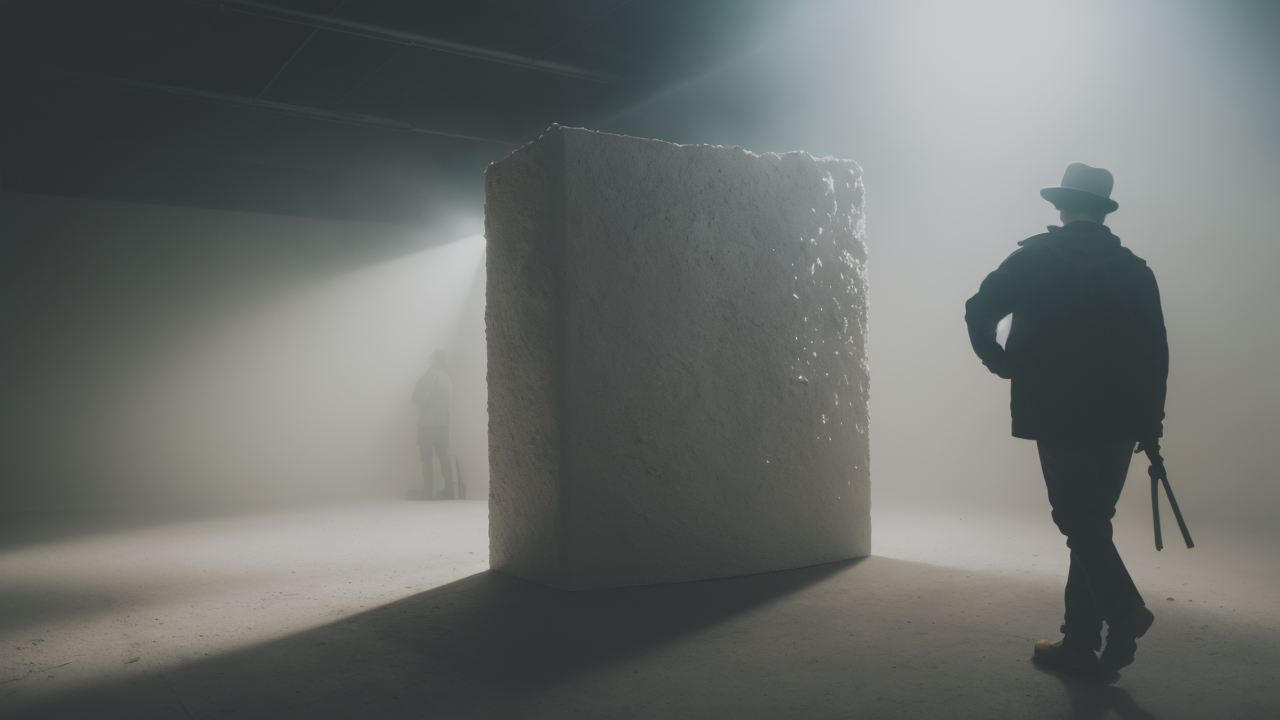
Contemporary Art Unveiled: Blending Plaster Textures with Abstract Minimalism
The Resurgence of Plaster in Modern Art
Historical perspective of plaster in art
Plaster has a rich history in art, dating back to ancient civilizations. It was used in Egyptian tombs and Greek sculptures. During the Renaissance, artists like Michelangelo used plaster for casting. In the 19th century, it became popular for decorative elements in architecture. However, its use in fine art declined in the 20th century. Modern artists favored new materials and techniques. Plaster was seen as old-fashioned and limited. It was mostly used for preparatory work or molds. But artists never completely abandoned it. Some continued to explore its potential in sculpture and relief work.

The comeback story: Plaster in contemporary art
In recent years, plaster has made a surprising comeback in contemporary art. Artists are rediscovering its versatility and unique properties. They appreciate its ability to capture texture and form. Plaster allows for both delicate details and bold, expressive gestures. It can be molded, carved, and combined with other materials. Contemporary artists use plaster in innovative ways. They create abstract sculptures, textured paintings, and installations. Plaster art is now featured in galleries and museums worldwide. It's seen as a medium that bridges traditional and modern techniques. This revival has sparked new interest in plaster among art students and collectors.
Plaster Art Texture Painting: A Deep Dive into the Technique
The process of creating textured paintings
Creating plaster art texture paintings involves several steps:

- Preparation: Artists start by choosing a sturdy surface like wood or canvas.
- Base layer: They apply a thin layer of plaster as a foundation.
- Texturing: Various tools are used to create texture while the plaster is wet.
- Drying: The plaster is left to dry completely, which can take several hours.
- Sanding: Some artists sand the surface to achieve desired smoothness.
- Painting: Color is added using acrylic or oil paints.
- Sealing: A final sealant protects the artwork.
Artists experiment with different techniques to create unique textures. They may use combs, spatulas, or even found objects. Some add materials like sand or fabric to the plaster. The process allows for both planning and spontaneity. Artists can control the texture but also embrace unexpected effects.
Materials and tools for creating plaster textures
To create plaster texture paintings, artists use a variety of materials and tools:
- Plaster: The main medium, available in different grades and setting times.
- Surface: Wood panels, canvas, or other sturdy bases.
- Mixing tools: Buckets, spatulas, and whisks for preparing plaster.
- Texturing tools: Combs, brushes, sponges, and found objects.
- Paints: Acrylic or oil paints for adding color.
- Sealants: To protect the finished artwork.
- Safety gear: Dust masks and gloves for handling plaster.
Artists often experiment with unconventional tools to create unique textures. They might use bubble wrap, leaves, or textured fabrics. Some add materials like sand, pebbles, or wood chips to the plaster. The choice of tools and materials greatly affects the final texture and appearance of the artwork.
Integrating Plaster Textures into Home Decor and Commercial Spaces
The role of plaster art in home decor
Plaster art has found a place in modern home decor. It adds texture and visual interest to interiors. Homeowners use plaster artwork as statement pieces in living rooms or bedrooms. Textured plaster paintings can create focal points on walls. They work well in minimalist spaces, adding depth without clutter. Plaster sculptures serve as unique accessories on shelves or tables. Some homeowners commission custom plaster artworks to match their decor. DIY enthusiasts are also exploring plaster art for home projects. They create textured wall panels or decorative objects. Plaster art complements various interior styles, from rustic to contemporary.

Commercial applications of plaster textured artworks
Plaster textured artworks are gaining popularity in commercial spaces. Hotels and restaurants use them to create distinctive atmospheres. Large-scale plaster installations make striking features in lobbies or reception areas. Corporate offices display plaster art to enhance their brand image. Retail stores use textured plaster elements in displays and decor. Architects incorporate plaster art into building designs for unique facades. Plaster artworks are also found in public spaces like museums and theaters. They offer durability and versatility for high-traffic areas. Commercial clients appreciate the customizable nature of plaster art. It allows for site-specific creations that reflect the space's purpose and style.


